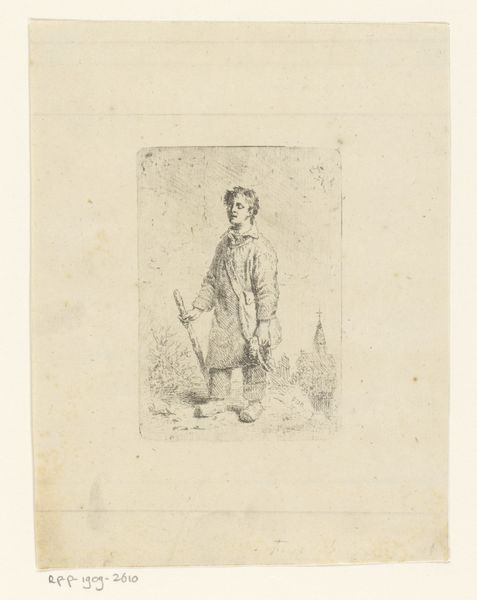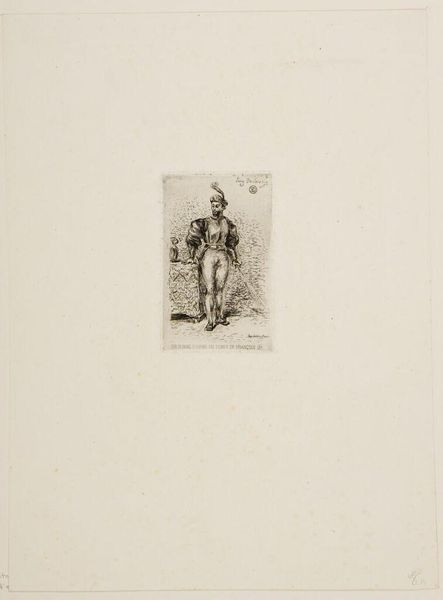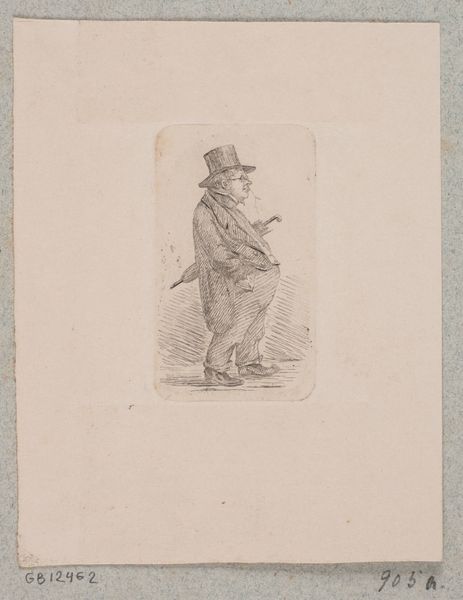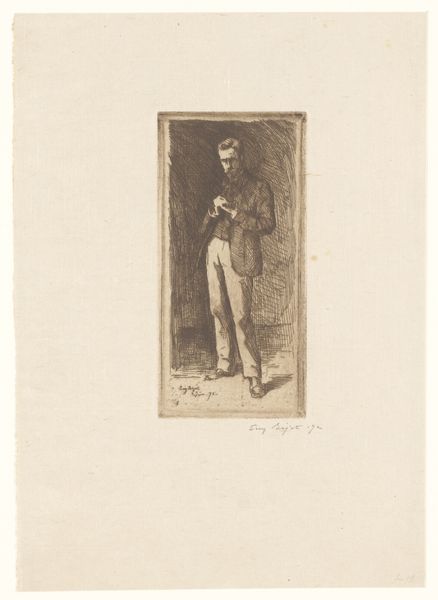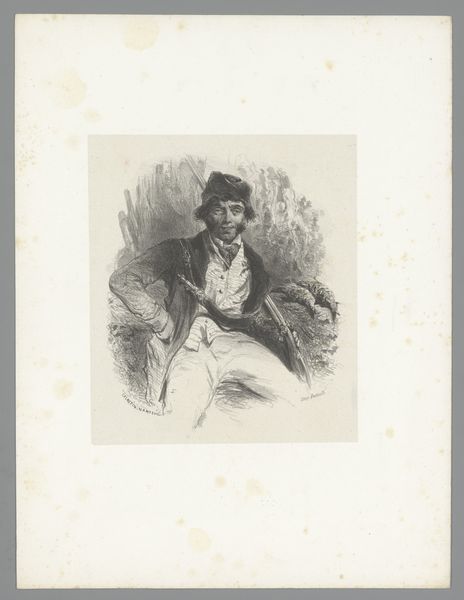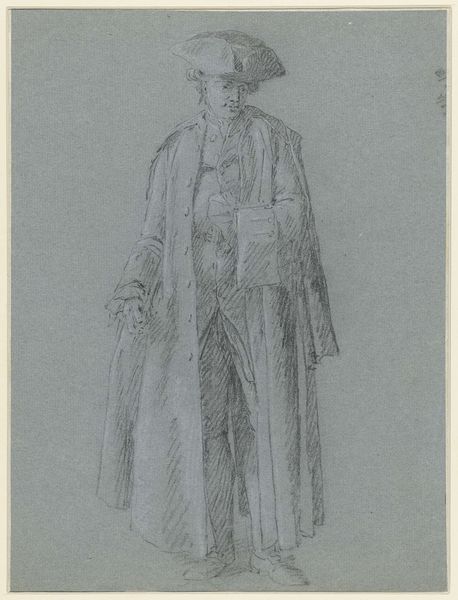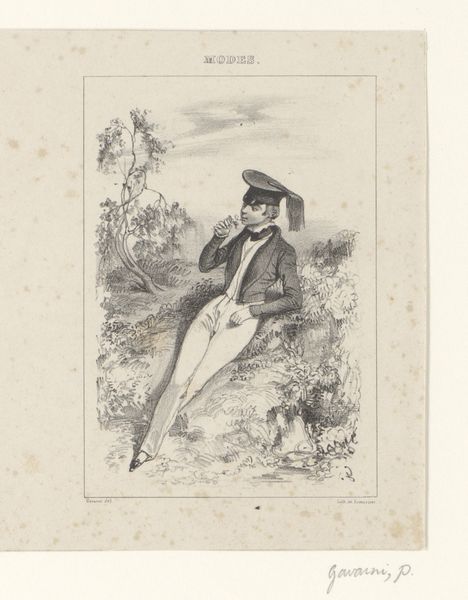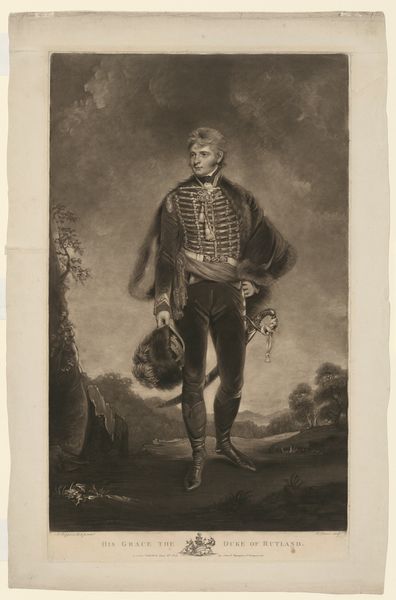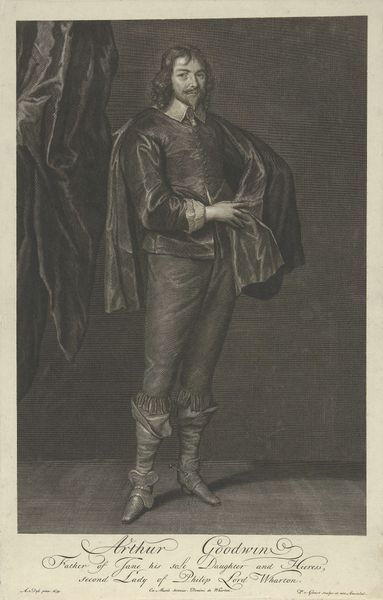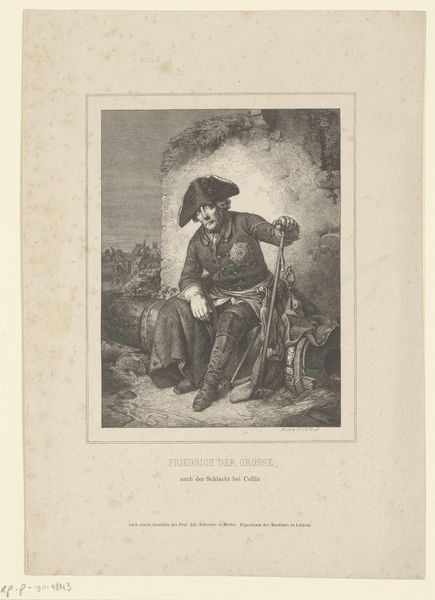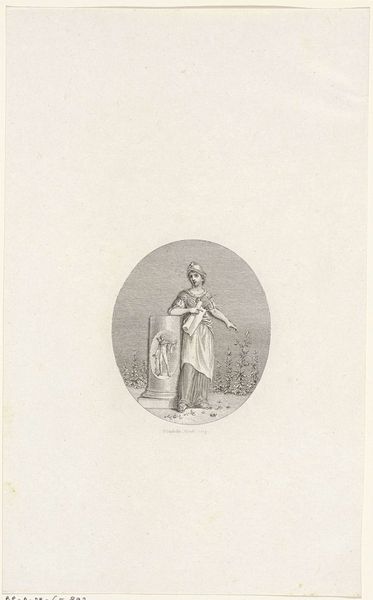
drawing, engraving
#
portrait
#
drawing
#
old engraving style
#
landscape
#
pencil drawing
#
forest
#
genre-painting
#
engraving
#
realism
Dimensions: height 183 mm, width 130 mm
Copyright: Rijks Museum: Open Domain
Editor: Here we have Jan van der Veen's "Man by a Tree in a Forest," created in 1857. It's a drawing or engraving that strikes me as somewhat melancholic. The man looks pensive, almost lost, within the confines of the woods. What do you see in this piece? Curator: I see more than just melancholy. This work is from the Realist period, so let's consider what "realism" truly meant. The rural subject and the very deliberate depiction of his simple garments become powerful social commentary. What's he doing there, alone, in that forest? Consider land ownership at this time and his proximity to natural resources from which he might have been excluded. Editor: So, you're saying his solitary stance isn't just a personal feeling, but a reflection of a broader social condition? The fact that he appears within this oval vignette – could that symbolize the limitations placed upon him? Curator: Exactly! Think about it - the Industrial Revolution was in full swing. Many people in rural areas lost their means for independent survival and were being forced to work in urban centers, sometimes feeling stripped of their identities. Do you think this piece could be considered to be somewhat activist-leaning, seeking to represent these invisible members of society? Editor: I hadn’t considered it that way. I was too focused on the "artistic" and individual elements of the work. Now I see it speaking to broader sociopolitical and economic injustices. Curator: Yes, the gaze directed at the figure is important. But also consider what is beyond his gaze - it tells the true story of the human cost of so-called "progress." Editor: Thank you; this really offers an avenue to look beyond the face value. I see so much more now.
Comments
No comments
Be the first to comment and join the conversation on the ultimate creative platform.
